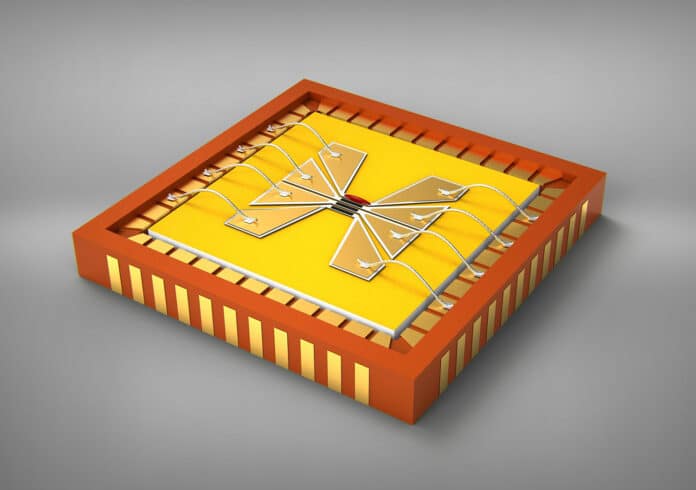Today’s screen display market offers a large range of choices, each with its pros and cons. However, factors including production costs, lifespan, and energy consumption have kept liquid crystal display (LCD) technology the most dominant and popular technology for screens such as TV sets and monitors.
Now, an international team has developed a new technology that could usher in the “next generation” of thinner, higher-resolution, and more energy-efficient screens and electronic devices. The team includes researchers from three universities – Nottingham Trent University, the Australian National University (ANU), and the University of New South Wales (UNSW) Canberra in Australia.
The newly engineered nanoparticles called “metasurfaces” can offer significant benefits over current displays like LCDs and LEDs.
“The capability of conventional displays has reached its peak and is unlikely to significantly improve in the future due to multiple limitations,” said Dragomir Neshev, ANU Professor in Physics. “Today, there is a quest for fully solid-state flat display technology with a high-resolution and fast refresh rate. We have designed and developed metasurface pixels that can be ideal for the next-generation display. Unlike liquid crystals, our pixels do not require polarised lights for functioning, which will halve screens’ energy consumption.”
The device consists of a silicon hole array metasurface encapsulated by transparent conducting oxide as a localized heater that can quickly change the optical properties of the silicon metasurface cells. The metasurfaces are reported to be 100 times thinner than liquid crystal cells, offer a tenfold greater resolution, and consume 50% less energy.
“Our pixels are made of silicon, which offers a long-life span in contrast with organic materials required for other existing alternatives. Moreover, silicon is widely available, CMOS compatible with mature technology, and cheap to produce,” said Professor Andrey Miroshnichenko, a lead researcher in the Nanophotonics team at UNSW Canberra.
The new metasurface cells would replace the liquid crystal layer and would not require the polarisers, which are responsible for half of wasted light intensity and energy use in displays.
In their study, the team demonstrated that pixels could be electrically programmed, and the light could be switched almost 20 times faster than human aversion response time by changing the temperature of the material. The researchers believe their technology is compatible with modern electronic displays. It fills a technological gap for tuneable metasurfaces capable of switching light effectively at high frequencies.
In future work, the team is planning to build a large-scale prototype and generate images, which is hoped to be achieved within the next five years. Once the prototype has successfully generated high-definition images, it is expected the technology will be integrated into flat screens and available to the public within the next ten years.
“We have paved the way to break a technology barrier by replacing the liquid crystal layer in current displays with a metasurface, enabling us to make affordable flat screens liquid crystal-free,” lead researcher Mohsen Rahmani, Professor of Engineering at Nottingham Trent University, said. “The most important metrics of flat panel displays are pixel size and resolution, weight, and power consumption. We have addressed each of these with our meta-display concept.”
“Most importantly, our new technology can lead to a huge reduction in energy consumption – this is excellent news given the number of monitors and TV sets being used in households and businesses every single day. We believe it is time for LCD and LED displays to be phased out in the same way as former cathode ray tube (CRT) TVs over the past ten to 20 years.”
Journal reference:
- Khosro Zangeneh Kamali, Lei Xu, Nikita Gagrani, Hark Hoe Tan, Chennupati Jagadish, Andrey Miroshnichenko, Dragomir Neshev and Mohsen Rahmani. Electrically programmable solid-state metasurfaces via flash localized heating. Light: Science & Applications, 2023; DOI: 10.1038/s41377-023-01078-6
